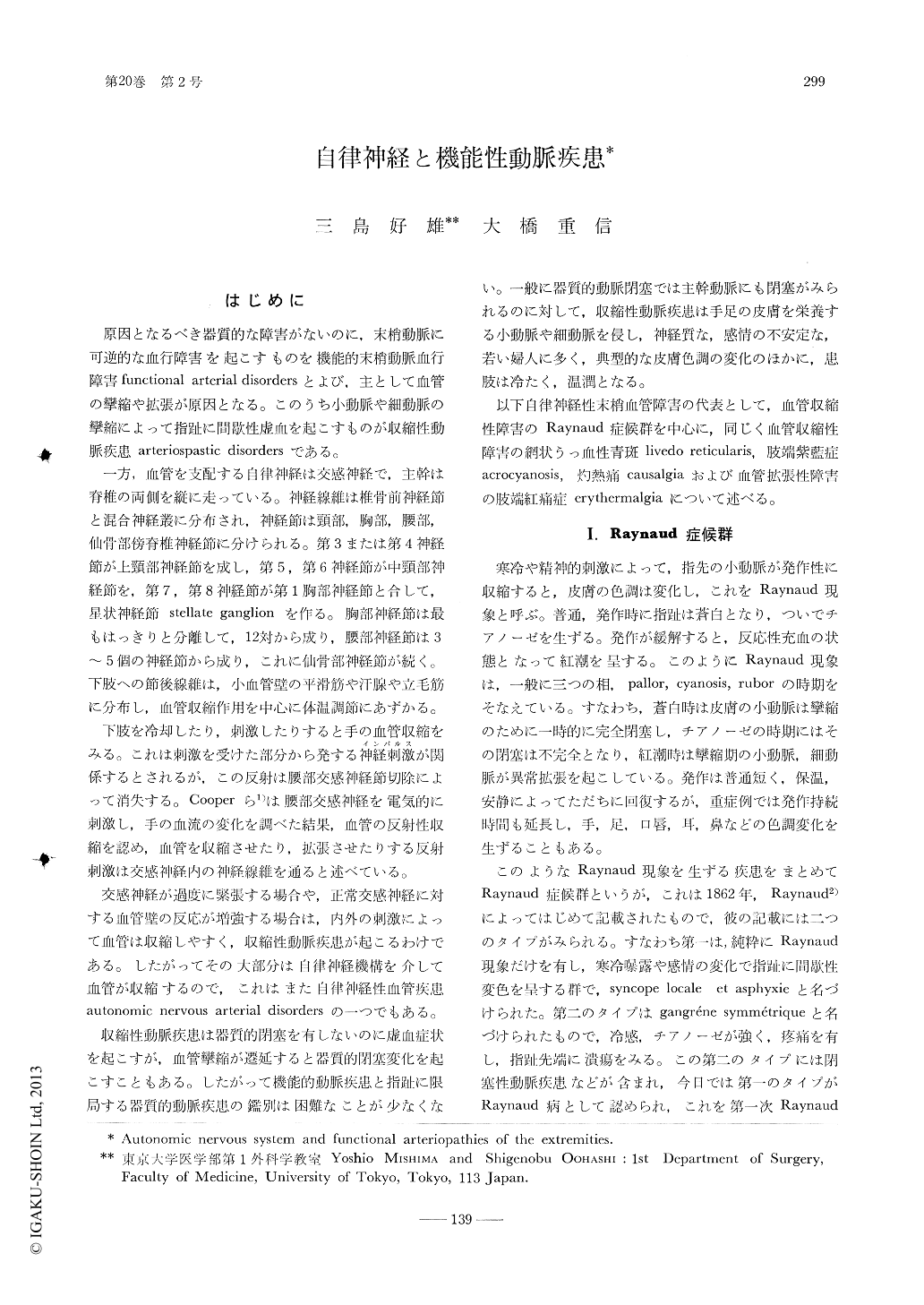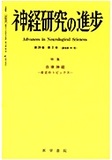Japanese
English
- 有料閲覧
- Abstract 文献概要
- 1ページ目 Look Inside
はじめに
原因となるべき器質的な障害がないのに,末梢動脈に可逆的な血行障害を起こすものを機能的末梢動脈血行障害functional arterial disordersとよび,主として血管の攣縮や拡張が原因となる。このうち小動脈や細動脈の攣縮によって指趾に間歇性虚血を起こすものが収縮性動脈疾患arteriospastic disordersである。
一方,血管を支配する自律神経は交感神経で,主幹は脊椎の両側を縦に走っている。神経線維は椎骨前神経節と混合神経叢に分布され,神経節は頸部,胸部,腰部,仙骨部傍脊椎神経節に分けられる。第3または第4神経節が上頸部神経節を成し,第5,第6神経節が中頸部神経節を,第7,第8神経節が第1胸部神経節と合して,星状神経節stellate ganglionを作る。胸部神経節は最もはっきりと分離して,12対から成り,腰部神経節は3〜5個の神経節から成り,これに仙骨部神経節が続く。下肢への節後線維は,小血管壁の平滑筋や汗腺や立毛筋に分布し,血管収縮作用を中心に体温調節にあずかる。
Blood vessels in the skin of the hand are in-nervated by sympathetic vasoconstrictor fibers. Alteration in the activity of these fibers permits large changes in blood flow. Indeed, the flow to the distal parts of the extremities is mainly deter-mined by reflex changes in vessel tone. Over-activity in the sympathetic nervous tone or hyper-sensitivity of the arteries and arterioles to normal sympathetic stimulation may make intermittent or permanent ischemia of the extremities due to spasm of the tiny arteries and arterioles without organiz-ed occlusions.

Copyright © 1976, Igaku-Shoin Ltd. All rights reserved.


